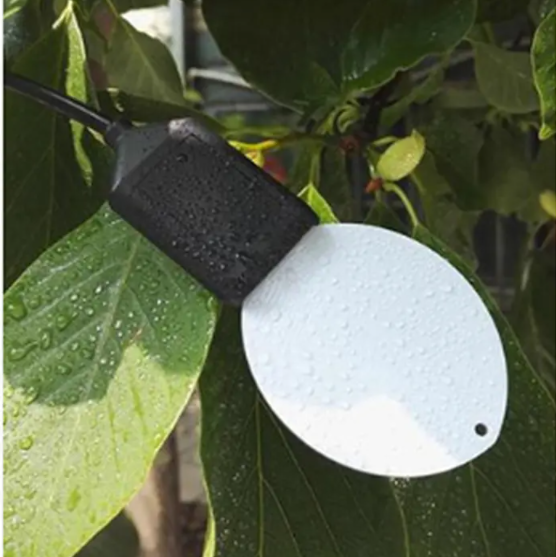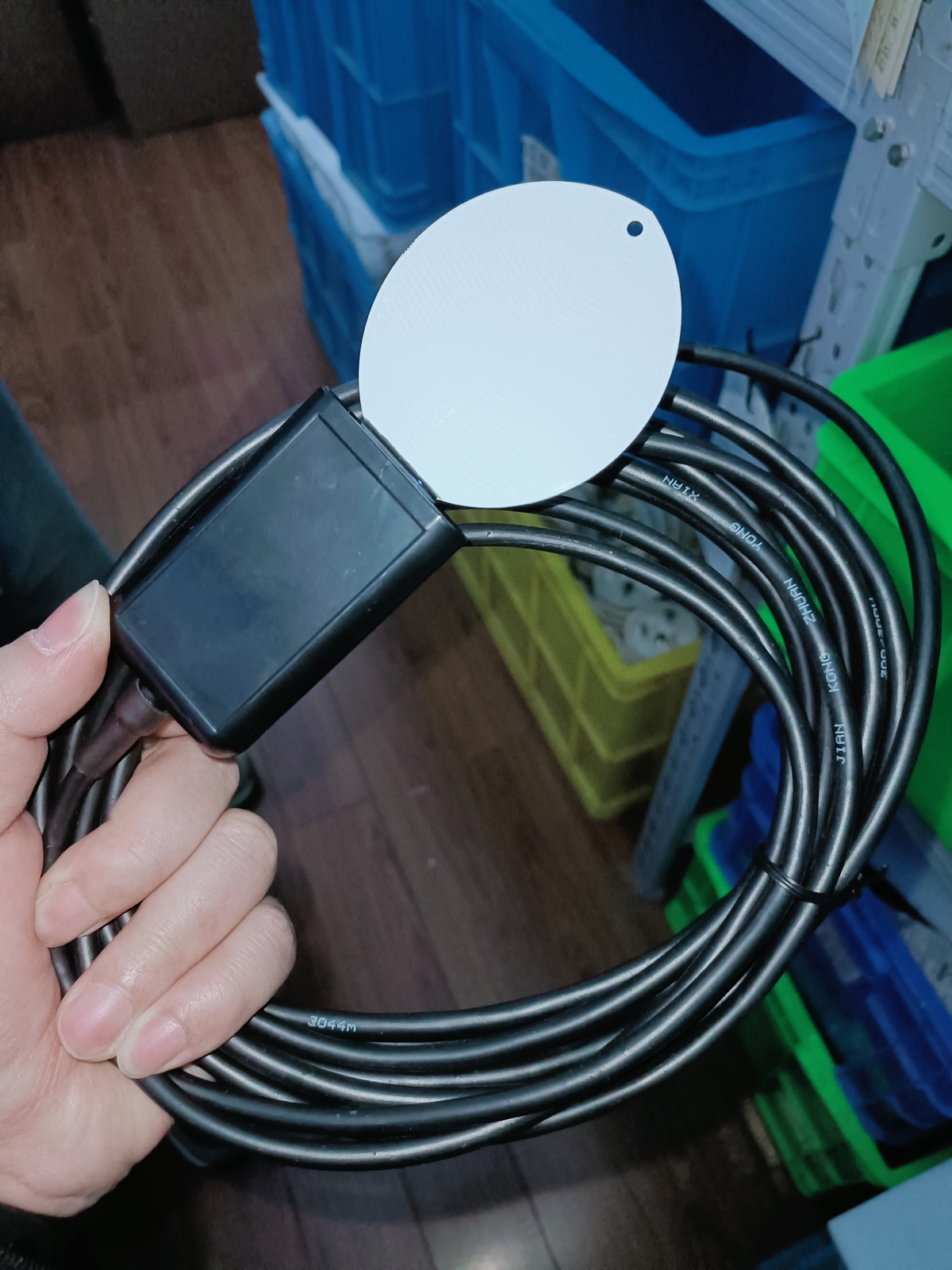

— Products —
 Consumer hotline +8618073152920
Consumer hotline +8618073152920 WhatsApp:+8615367865107
Address:Room 102, District D, Houhu Industrial Park, Yuelu District, Changsha City, Hunan Province, China
All products
Leaf moisture sensor, i.e. leaf humidity sensor, is a professional device for detecting plant leaf moisture. It realizes real-time monitoring of plant leaf humidity by sensing the moisture content on the leaf surface and converting the humidity information into electrical signals or other measurable physical quantities.
Tel/WhatsApp:+8615367865107
Email:Arvin@niubol.com +Nearly 100 partner company in more than 68 countries. We are committed to providing high-quality, practical products to meet your needs and help you solve problems.Product Details
Leaf moisture sensor, i.e. leaf humidity sensor, is a professional device for detecting plant leaf moisture. It realizes real-time monitoring of plant leaf humidity by sensing the moisture content on the leaf surface and converting the humidity information into electrical signals or other measurable physical quantities.

The leaf surface temperature and humidity sensor has a compact shape, stable performance and high sensitivity, and is an important tool for researching leaf surface temperature and humidity, preventing infections, insect pests and spray irrigation control. It accurately monitors trace moisture or ice crystal residues through changes in the dielectric constant of the leaf surface, and because it includes temperature detection, it can distinguish whether moisture or ice crystals are detected. The appearance simulates the real leaf design, so it can more accurately reflect the real environmental conditions on the leaf surface. The product adopts RS485 output.
| Supply Voltage: | DC 12V-24V |
| Communication method: | RS485 |
| Power Consumption: |
Peak power consumption:120mW Standby power consumption: 72mW |
| Baud rate: | 9600bps |
| Temperature range: | -40—80℃ |
| Temperature accuracy: | ±0.5℃ |
| Humidity Range: | 0—100%RH |
| Humidity Accuracy: | ±5%RH |
| Working Environment: | -40—85℃ |
The following is the introduction of leaf surface humidity sensor and some application scenarios:
1. Working Principle: Leaf surface humidity sensor is usually used to accurately monitor the trace water or ice crystal residue through the change of dielectric constant on the leaf surface, because it includes temperature detection, so it can distinguish whether it is water or ice crystal that is detected.
Leaf moisture sensor characteristics:
2.1 These sensors are usually small, wireless, easy to install, and can be monitored for long periods of time without interfering with normal plant growth.
2.2 High sensitivity: it can accurately sense small humidity changes on the leaf surface and provide accurate humidity data.
2.3 Good stability: the sensor structure is well designed to maintain stable performance under various environmental conditions.

1. Irrigation management: By monitoring the leaf surface humidity, we can more accurately understand the water demand of plants, so as to realize precise irrigation and save water resources.
2. Agriculture: In agricultural production, leaf moisture sensor can be used to monitor the humidity of crop leaves, helping farmers to understand the growth status of crops, reasonably adjust the irrigation and fertilization plan, and improve the yield and quality of crops. At the same time, by monitoring the humidity of crops of different varieties and different growth stages, it can provide strong support for agricultural research.
3. Crop monitoring: In modern agriculture, the moisture status of a large area of farmland can be quickly monitored by foliar humidity sensors installed on drones or automatic measuring vehicles.
4. Climate change research: The data provided by foliar moisture sensors is important for understanding how plants adjust their water status in the context of global climate change.
5. Environmental protection field: In environmental monitoring, leaf moisture sensor can be used to assess the plant's ability to adapt to the environment and the impact of environmental factors on plant growth. Through the long-term monitoring of plant leaf moisture, we can understand the impact of climate change, soil quality and other factors on plant ecology, which provides a scientific basis for environmental protection.
6. Horticulture: In horticultural landscapes, the leaf moisture sensor can be used to monitor the humidity of plant leaves, providing horticulturists with real-time data on plant health. This helps to detect water shortages or overwatering of plants in time and take appropriate measures to keep the plants in good growing condition.
7. Greenhouse management: In greenhouses, foliar humidity sensors can help regulate the internal climate and ensure that plants are supplied with the right amount of water.
8. education and research: in the field of plant physiology, ecology and other areas of education and research, foliar humidity sensors provide important experimental data.
In conclusion, foliar humidity sensors have a wide range of applications in the fields of agriculture, environmental monitoring, garden maintenance and scientific research, and can provide strong support for research and practice in related fields. It helps to improve our understanding and practice of plant water management, and the performance and application scope of leaf moisture sensor will continue to expand in the future.
NBL-W-LM-Leaf-Temperature-and-Humidity-Sensor-Instruction-Manual.pdf
Sensors & Weather Stations Catalog
Agriculture Sensors and Weather Stations Catalog-NiuBoL.pdf
Weather Stations Catalog-NiuBoL.pdf
Related recommendations
 Multi-Depth Soil Sensor RS485
Multi-Depth Soil Sensor RS485 TDR Soil Moisture Sensor
TDR Soil Moisture Sensor Pyranometer Solar Radiation Sensors
Pyranometer Solar Radiation Sensors Soil ph sensor
Soil ph sensor Tipping Bucket Rain Gauge
Tipping Bucket Rain Gauge Air Temperature and Humidity Sensor
Air Temperature and Humidity Sensor
Screenshot, WhatsApp to identify the QR code
WhatsApp number:+8615367865107
(Click on WhatsApp to copy and add friends)
